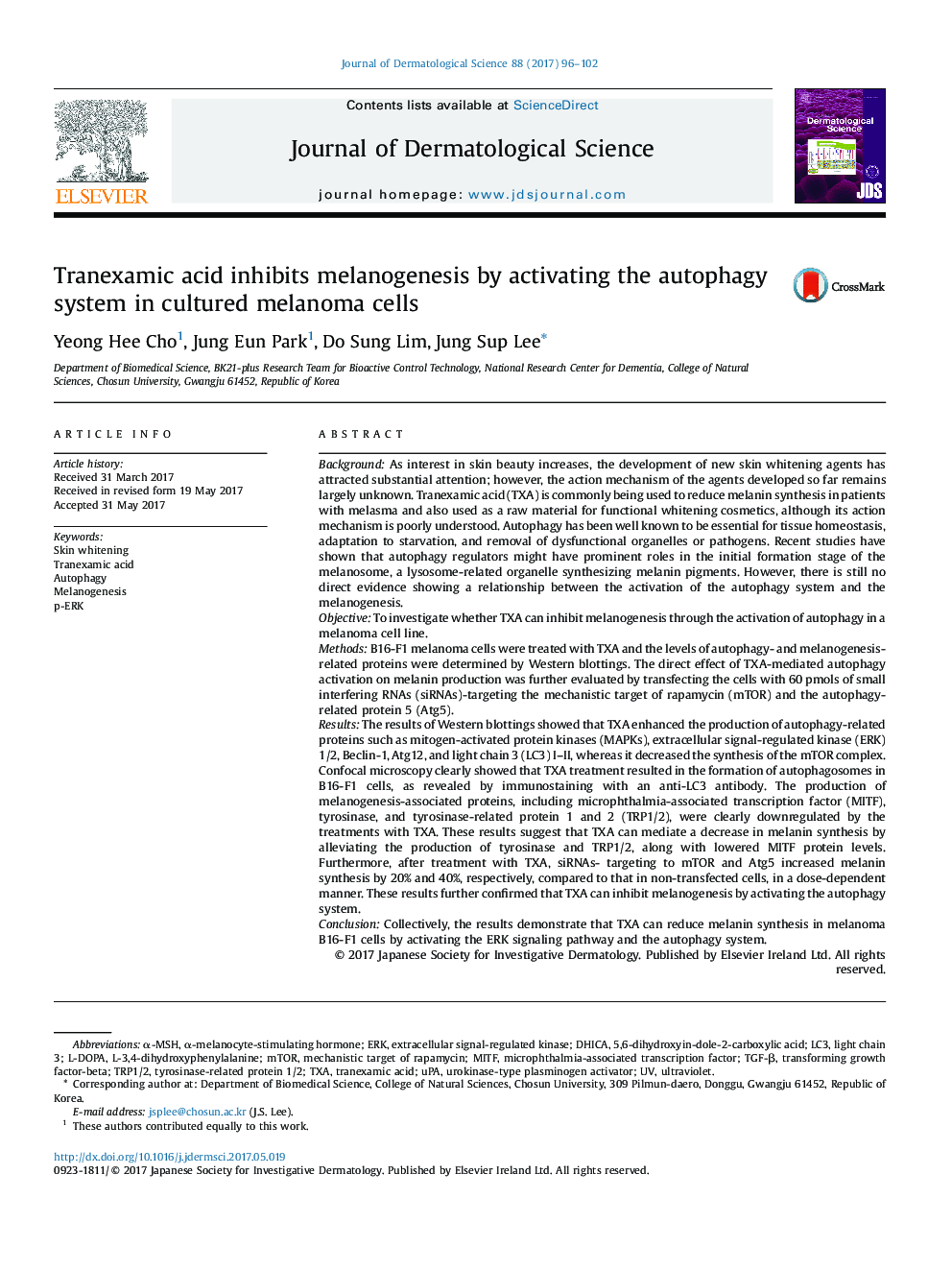| کد مقاله | کد نشریه | سال انتشار | مقاله انگلیسی | نسخه تمام متن |
|---|---|---|---|---|
| 5648747 | 1587814 | 2017 | 7 صفحه PDF | دانلود رایگان |
BackgroundAs interest in skin beauty increases, the development of new skin whitening agents has attracted substantial attention; however, the action mechanism of the agents developed so far remains largely unknown. Tranexamic acid (TXA) is commonly being used to reduce melanin synthesis in patients with melasma and also used as a raw material for functional whitening cosmetics, although its action mechanism is poorly understood. Autophagy has been well known to be essential for tissue homeostasis, adaptation to starvation, and removal of dysfunctional organelles or pathogens. Recent studies have shown that autophagy regulators might have prominent roles in the initial formation stage of the melanosome, a lysosome-related organelle synthesizing melanin pigments. However, there is still no direct evidence showing a relationship between the activation of the autophagy system and the melanogenesis.ObjectiveTo investigate whether TXA can inhibit melanogenesis through the activation of autophagy in a melanoma cell line.MethodsB16-F1 melanoma cells were treated with TXA and the levels of autophagy- and melanogenesis-related proteins were determined by Western blottings. The direct effect of TXA-mediated autophagy activation on melanin production was further evaluated by transfecting the cells with 60 pmols of small interfering RNAs (siRNAs)-targeting the mechanistic target of rapamycin (mTOR) and the autophagy-related protein 5 (Atg5).ResultsThe results of Western blottings showed that TXA enhanced the production of autophagy-related proteins such as mitogen-activated protein kinases (MAPKs), extracellular signal-regulated kinase (ERK)1/2, Beclin-1, Atg12, and light chain 3 (LC3) I-II, whereas it decreased the synthesis of the mTOR complex. Confocal microscopy clearly showed that TXA treatment resulted in the formation of autophagosomes in B16-F1 cells, as revealed by immunostaining with an anti-LC3 antibody. The production of melanogenesis-associated proteins, including microphthalmia-associated transcription factor (MITF), tyrosinase, and tyrosinase-related protein 1 and 2 (TRP1/2), were clearly downregulated by the treatments with TXA. These results suggest that TXA can mediate a decrease in melanin synthesis by alleviating the production of tyrosinase and TRP1/2, along with lowered MITF protein levels. Furthermore, after treatment with TXA, siRNAs- targeting to mTOR and Atg5 increased melanin synthesis by 20% and 40%, respectively, compared to that in non-transfected cells, in a dose-dependent manner. These results further confirmed that TXA can inhibit melanogenesis by activating the autophagy system.ConclusionCollectively, the results demonstrate that TXA can reduce melanin synthesis in melanoma B16-F1 cells by activating the ERK signaling pathway and the autophagy system.
Journal: Journal of Dermatological Science - Volume 88, Issue 1, October 2017, Pages 96-102
